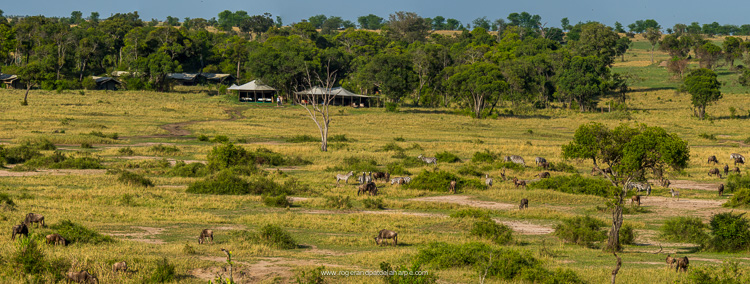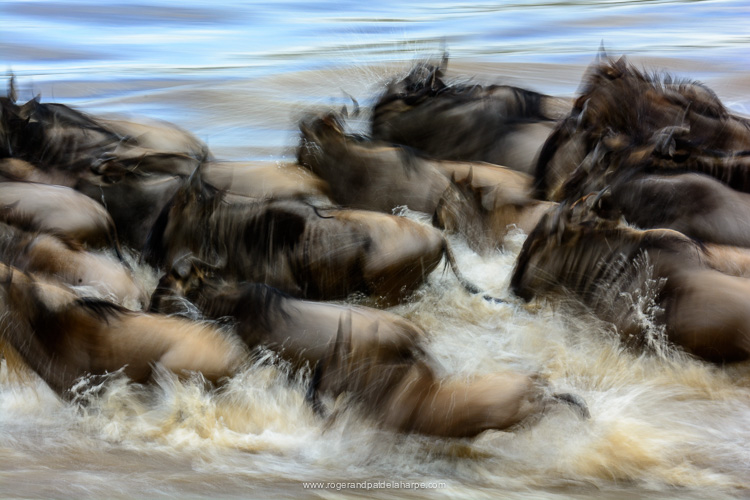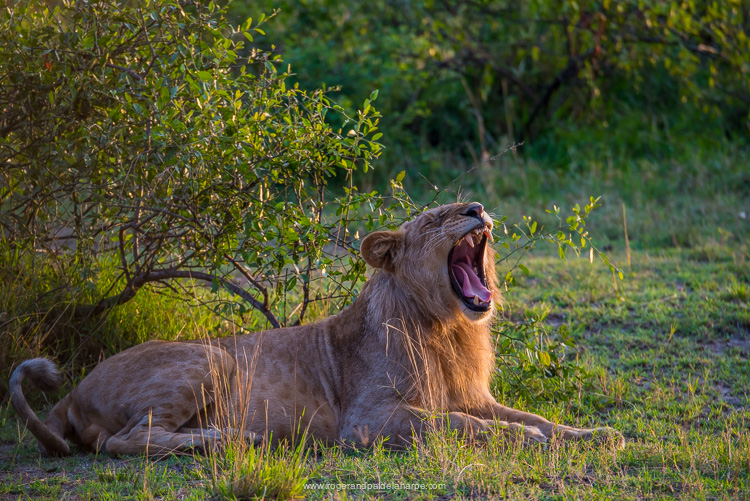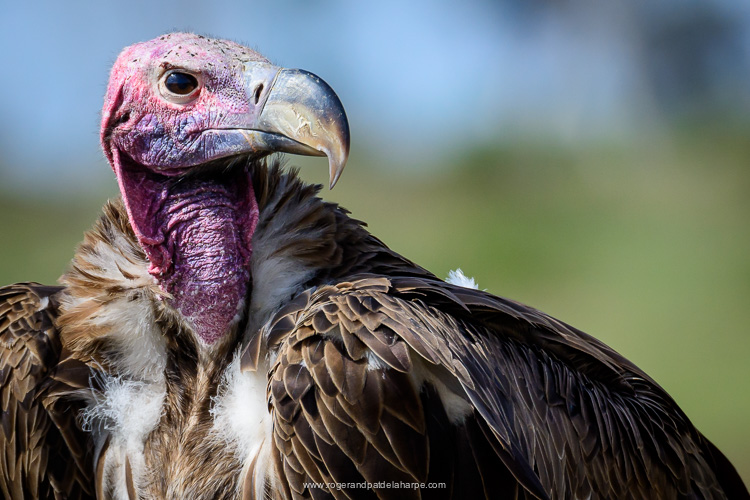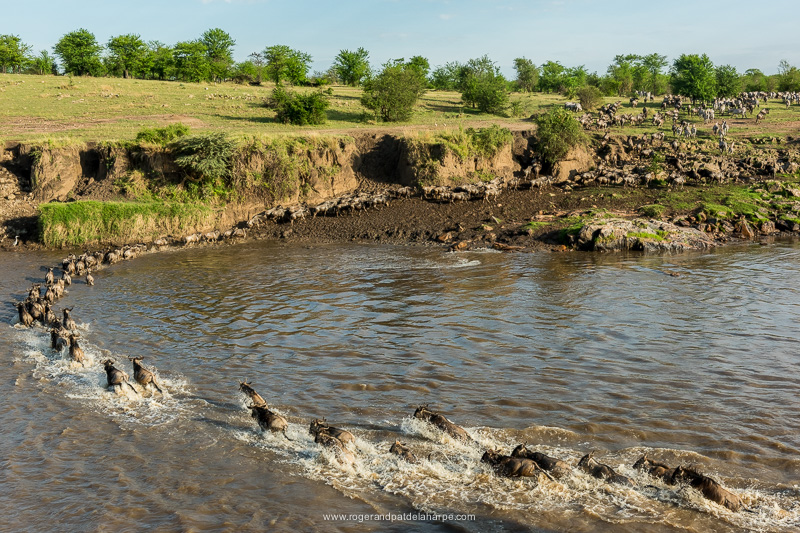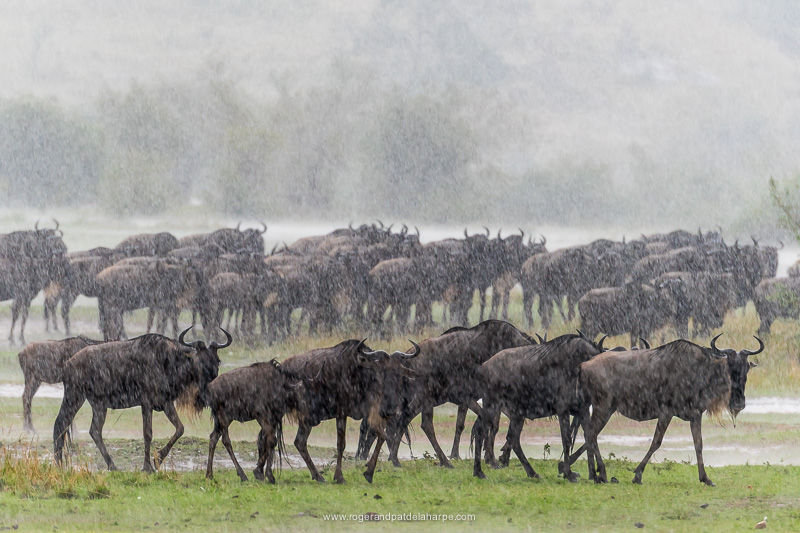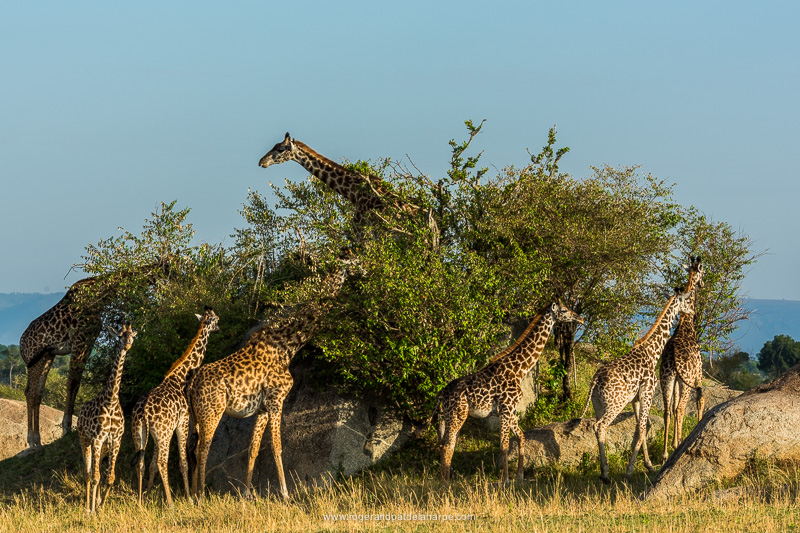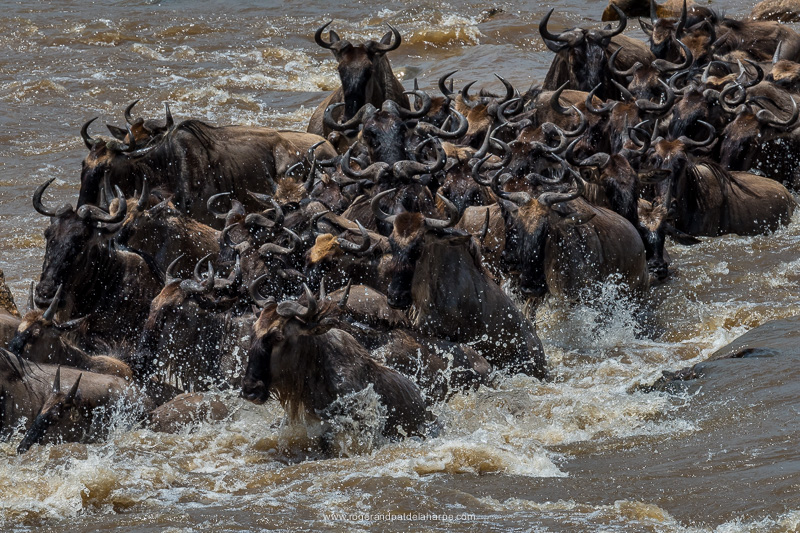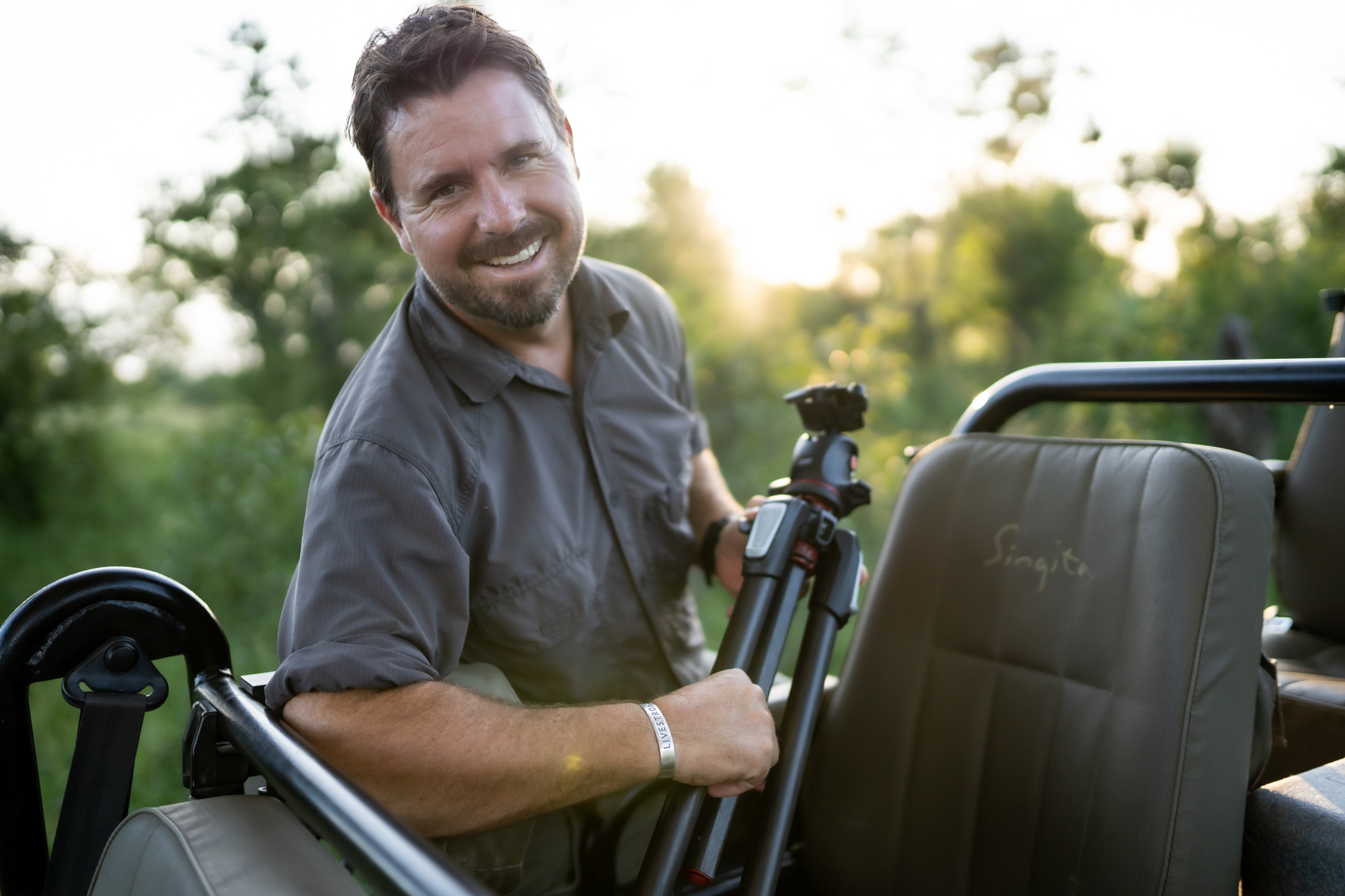Taking the Nikon D810 for a test in the wild: Roger de la Harpe shares his photos and stories from the Mara River.
Article and photos by Roger and Pat de la Harpe.
So, here we are, sitting in the Wild Frontiers‘ stretch Land Cruiser with our guide John Letara who is doing some serious networking on the shortwave radio so that we are kept up to date with the congregations of wildebeest along the Mara River. Across said river are some 300 or 400 wildebeest that we are hoping are thinking that the grass is greener on our side, and are willing to risk drowning, crocodiles (very large crocodiles) and broken legs.
Wildebeest and Zebra gather on the northern bank of the Mara River while crocodiles wait below. Serengeti National Park. Tanzania.
What has happened though (and this writing has been interrupted for a while) is that before they could make up their minds, a smaller group, about a kilometer down stream decided to cross so there was a mad scramble to get to them. The risk was worth it and all the animals made it across the rather rocky crossing (not good because this is the sort of place where legs get broken) and the crocodiles remained unfed. Still, it was exciting and we got some great pix for our African Icons book.
We’ve had some really great sightings and experiences here. Seven crossings (and counting) have allowed us to get used to the event, to slow down, to get more creative with the images. The evening and morning light has been lovely and when we haven’t been chasing crossings we’ve picked up some great images of lions, elephants, eland, Rüppel’s vultures, zebras and passed up on leopard and cheetah sightings in favor of the crossings.
Wildebeest crossing the Mara River in the Serengeti Game Reserve in Tanzania as part of the migration.
Our reason for being here is twofold: Firstly, and most importantly, we are here to complete the story of the wildebeest migration that we began in April this year for our African Icons book. At that stage the wildebeest and their calves were down in the south of the Serengeti, savoring the rich green grass so prevalent there at that time of year. Now they are up here in the north, crossing and re-crossing the Mara River as they battle to decide on which side the grass is greener.
Our Wild Frontiers camp is situated about 200m from crossing 1 and a little further to number 2 and provides excellent access to what seems to be the most productive of all of the crossings on the river at the moment. The camp is comfortable rather than luxurious and beautifully managed by Claudian Samweli and his team. Food is generous and hearty, and the view from the mess tent simply stunning – a great place for a evening drink after a hard day’s game viewing and photography.
Wild Frontiers Camp in the northern Serengeti that overlooks the Mara River.
The other thing we are doing up here is trying out the new Nikon D810 (the successor to the D800), very kindly lent to us by Nikon South Africa. We’ve used the D800 ever since it was released some years ago and have got to love it. Image quality is simply stunning (you have to use Nikon’s top lenses though) and it’s one of the most versatile cameras I’ve ever used. In short, it’s a brilliant camera, if a little slow in frame rate – not impossibly slow, just enough to make it seem a a tad sluggish when the action starts happening. So, Nikon has brought out the D810 and I was left wondering just how they have improved it and if it would be worth replacing the D800 with it.
At this stage of our trip, I’ve shot about 3000 frames with it using both the Nikon 24-70mm f/2.8 and the Nikon AF-S 80-400mm lenses and the bad news is that I’m simply going to have to shell out the cash and get one. Nikon have taken a really great camera and turned it into a simply stunning one. How?
Overcast conditions allowed us to slow the shutter speeds right down to do these panning shots and to blur the action resulting in some interesting images. It’s easy to customise the controls on the Nikon D800 making it very quick to change settings (ISO, focussing, etc) as conditions and shooting style require.
Firstly, that frame rate has been fixed. It’s up from around 4 fps to about 6 in full frame mode and 7 if you shoot it as a DX camera with the MB-D12 grip attached. Buffer size is large and the camera coped very well at the river crossings with no sign of buffer issues and this using the image backup facility, the camera writing pix to both the Lexar CF and SD cards at the same time. It’s simply amazing! These are huge, 36.6MP files and the camera just chews up the data.
Autofocussing with the above lenses is pretty much instant. One of the things I love about the AF-S 80-400mm is how light and easy it is to use as opposed to the 200-400mm for example. Please don’t get me wrong, the 200-400mm is a lovely piece of glass and I used one for many years but the VR on the 80-400mm and its lightness make it very easy to “get onto” a subject and start shooting very quickly – particularly important when shooting wildlife. The D810 makes this even quicker. So often on this trip we come across sightings that have required quick reactions and we’ve not been let down once, the camera locking on in an instant, allowing me to get shooting. In short, they’ve taken the D800 and fed it some performance enhancing illegal substances and the result is alive and responsive, easily becoming transparent to the photographer, allowing you to forget about the camera and concentrate on the image.
The tonal range and sharpness obtained with the Nikon D810 and the AF-S 80-400 is simply beyond belief as can be seen here. The shadow and highlight detail is amazing.
Have a look at some more images and please follow the action on the African Icons’ FaceBook Page.
Shot with the Nikon D7100 and AF-S 80-400mm combination this pic of a Lappet-Faced Vulture shows incredible detail and sharpness when viewed at 100%, alas, not available here.
Here’s a few more photos from the trip:




